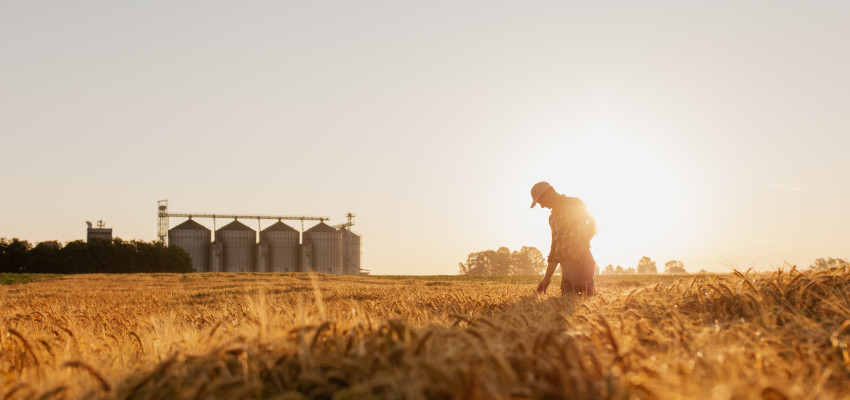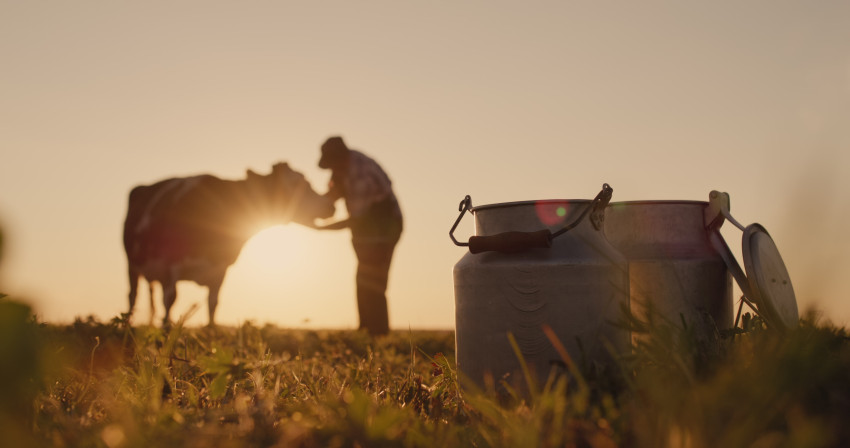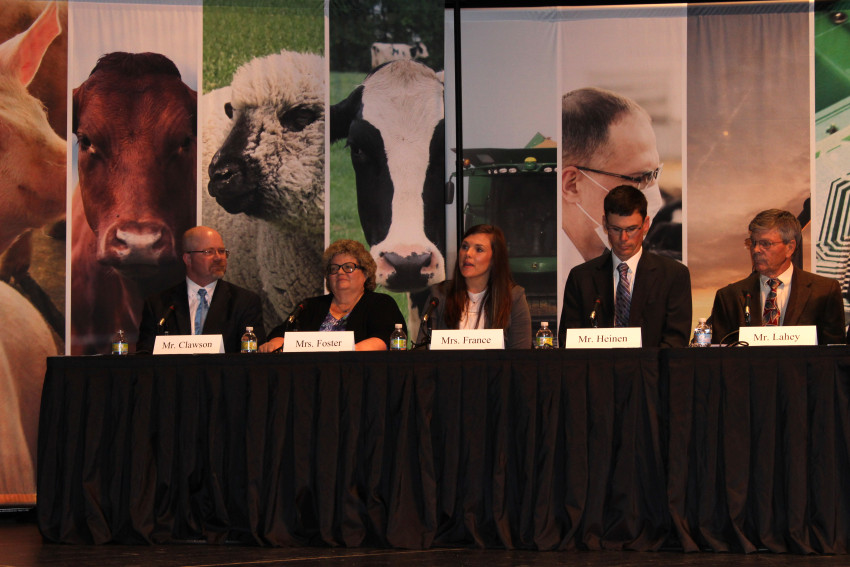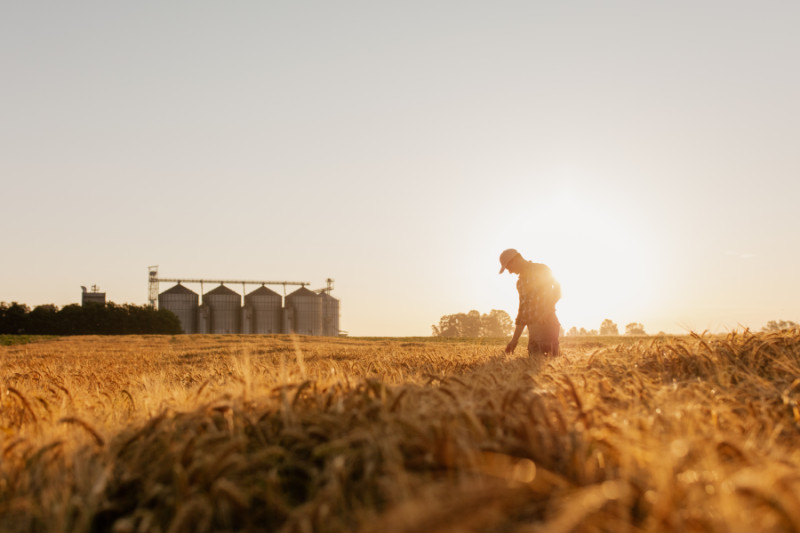By Greg Doering on February 1, 2023
How the Farm Bill Impacts Everyone, Not Just Farmers

By the time the Great Depression started in 1929, America’s farmers and ranchers were already suffering from a yearslong agricultural depression that had started shortly after World War I. While Congress debated several relief proposals, none was ever enacted.
A lack of policy to ensure an adequate price for crops and livestock created a downward cycle. To make up for low prices, farmers and ranchers raised more and more, creating larger surpluses that drove prices even lower.
It wasn’t until 1933 that the federal government acted to prevent further destruction in the agriculture industry. Under the New Deal, three closely related programs — the Commodity Credit Corporation, Agricultural Adjustment Administration and Farm Credit Administration — were created to address the problems of oversupply and low prices. In conjunction, the programs essentially set a floor on the price of staple crops like corn and wheat, offered incentives for returning farmland to grassland and refinanced farm mortgages to lower interest rates. Now considered the first farm bill, the original legislation has been reviewed and updated every five years or so. Congress is slated to pass the 19th iteration in 2023.
Over the decades, the farm bill has evolved alongside agriculture. It no longer is just about protecting the work of farmers and ranchers, but rather the policies touch nearly every corner of agriculture and ensure U.S. consumers have access to high quality, safe and nutritious food.
The modern Farm Bill
Unlike the 1933 farm bill, which was focused almost exclusively on farmers, today’s farm bill is aimed at many aspects of agriculture from the growers to consumers through various programs packaged under a single bill with “titles” addressing specific areas.
Though the titles vary from bill to bill, the 2018 farm bill included 12 that covered commodities, conservation, trade, nutrition, credit, rural development, research, extension and related matters, forestry, energy, horticulture, crop insurance and a catchall for miscellaneous matters.
While the list is expansive, 99 percent of farm bill spending is currently dedicated to nutrition, commodities, crop insurance and conservation. Most has gone toward the nutrition component, primarily through the Supplemental Nutrition Assistance Program (SNAP), which helps vulnerable families purchase healthy food.
The remaining 1 percent is divided among the other eight titles and makes investments in rural economic growth, research supporting innovation and food safety, farmers markets, local food programs and much more.
“In that 1 percent, there are a lot of research and training programs that can have a big impact,” says Jenny Ifft, associate professor in agricultural economics at Kansas State University.
Farm safety net
Of all the titles in the farm bill, crop insurance is perhaps the most important to Kansas farmers because it gives them certainty when making investments to expand, whether that means buying more land or upgrading their equipment.
Mother nature is a tough business partner, but with crop insurance, farmers receive protection from disasters in the same fashion home and car owners are guarded against damage to their property. Under the farm bill, farmers receive varying subsidies to buy policies from private companies to cover perils like frost, wind, disease, drought, fire, flooding and insect damage. Coverage for more than 120 crops is available, with the premium and amount paid in the event of a loss being tied to the actual value of the crop.
From lawmakers’ point of view, the risk management tools in the farm bill prevent a lot of headaches from trying to pass separate legislation for disaster relief after every flood, fire, freeze or other catastrophe.
“It really takes the place of disaster programs, which are a disaster to implement,” says retired Sen. Pat Roberts, who worked on eight farm bills during his tenure in both the House and Senate. “It’s far better to have crop insurance.”
In fact, crop insurance is so important to Kansas farmers that Rep. Tracey Mann says it’s the main topic he heard on the campaign trail last fall on visits with producers in Kansas’ 1st Congressional District. Mann’s district stretches from the Colorado border in the west to portions of Douglas County in the east, giving him a broad view of agriculture across more than three-quarters of the state.
Mann, who grew up on a farm near Quinter, serves on the House Agriculture Committee, which is tasked with writing the 2023 farm bill. He also sees room in the next bill for expanded trade promotion and reduced regulations for farmers and ranchers. Mann says successfully drafting the next farm bill involves telling the story of American agriculture and how it extends beyond our country’s borders.
“Our farmers in Kansas, in the Midwest and throughout the country feed a hungry world,” he says. “That need is constantly growing so we need to have policy in place to meet it.”
Expanding trade and opening new markets gives farmers more incentive to raise crops and livestock, while reducing regulations lowers the cost of production, which can then be passed on to consumers.
Investment incentive
“Speaking broadly, the farm bill helps create an environment where our producers can innovate and can keep growing,” Ifft says. “Economic stability is a policy objective. The farm bill helps create that stability so farmers can adapt.”
Roberts says the multiyear spending authorized in farm bills adds certainty, noting farms are like any other business and benefit from the ability to make long-range plans. Ifft agrees.
“If you grow row crops like wheat, corn or soybeans, more likely than not, you’re using crop insurance,” she says. “Something like 90 to 95 percent of acres in row crops are covered by crop insurance. That helps producers access credit and make investments. If you have a bad year, it’s going to help keep your farm and your family in business.”
Food safety net
Ultimately, feeding people is the goal of the farm bill, and the nutrition title accounts for about three-quarters of the total spending authorized by Congress. Most of the money is distributed through SNAP, which was formerly known as the food stamp program. Recent farm bills have included provisions for purchasing fresh fruits and vegetables distributed to school lunch programs.
Like crop insurance, SNAP provides a buffer for families facing economic hardships, especially if they struggle to put food on their table.
“It can be the difference between officially being classified as in poverty or not,” Ifft says. “It’s countercyclical and sees increased use during times of economic hardship.”
SNAP also provides indirect benefits for retailers like grocery stores and increases the demand for food, which helps farmers and ranchers. It also serves a broad range of families across the country, in both urban and rural areas. From 2011- 15, SNAP participation averaged 13 percent of households in urban areas while the utilization rate in rural areas was 16 percent.
“SNAP has millions of participants, but the average benefit is $218 per month,” Ifft says. “While urban populations are larger and hence have more beneficiaries, SNAP is relatively more important in rural areas.”
Building a coalition
At first glance, it can be difficult to see the connection between policies targeted at a small group like farmers and ranchers and the wide safety net funded under the nutrition title, but both Mann and Roberts say the union is critical for the legislation.
“At the end of the day — whether you’re a Republican, Democrat, Independent or Libertarian — everyone eats,” Mann says. “We’ve got to have a safe, consistent, robust food supply to feed America.”
Roberts points to the bridge the nutrition component provides between legislators representing rural and largely agrarian districts and their colleagues in cities. He says without the nutrition component, the bill would lose votes from both Democrats and Republicans. It also serves as a reminder that food doesn’t grow in grocery stores. Supporting growers also means supporting consumers, and combining the two leads to bipartisan compromise to create the best policy possible.
“It comes from everyone in agriculture,” Roberts says. “If farmers and ranchers are going through a tough time, the direct result of that will be reflected at the grocery store.”
Supporting everyone
The bill is as diverse and encompassing as agriculture itself, even if consumers’ perception of farmers and ranchers differs from the reality.
“If you look at the general population, people care about their food,” Ifft says. “As a society, a lot of people still have a warm place in their hearts for agriculture. There is that general support; it’s not always linked to an understanding of what modern agriculture looks like and what it takes to earn your livelihood in agriculture.”
In a way, calling it the farm bill is a disservice since the ultimate policy objectives are about ensuring our nation’s pantry is well stocked. Groceries start at farm gates long before they wind up on dinner plates, so perhaps a better name would be the farm and food bill. Because without one, we wouldn’t have the other.








